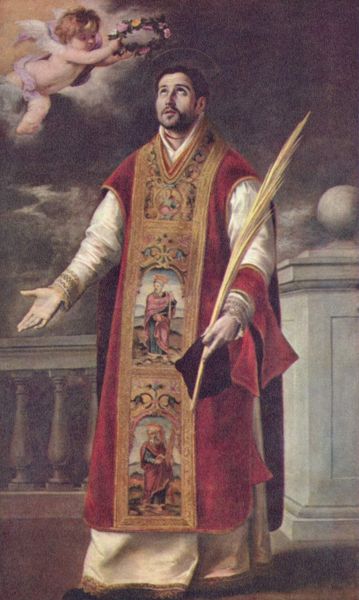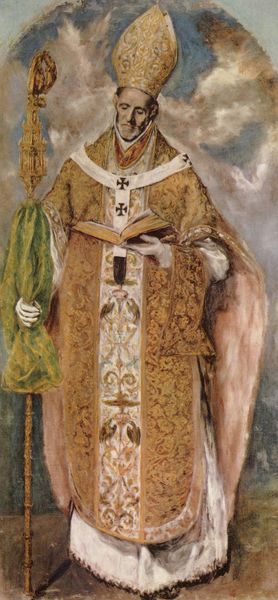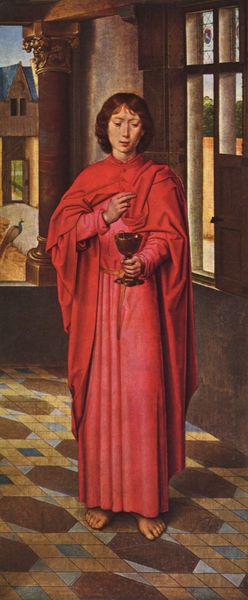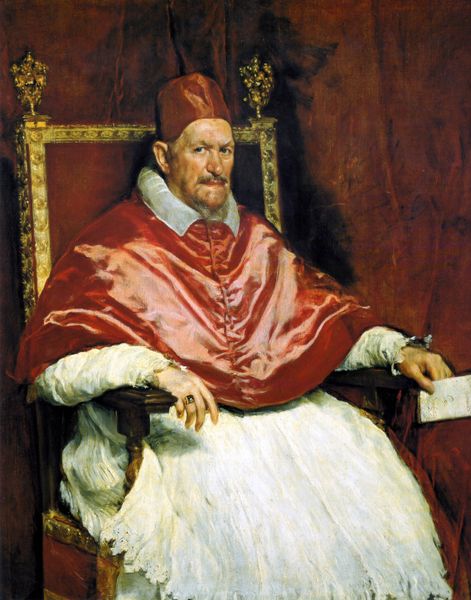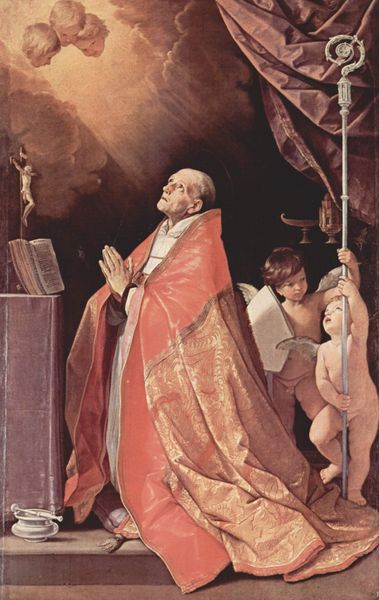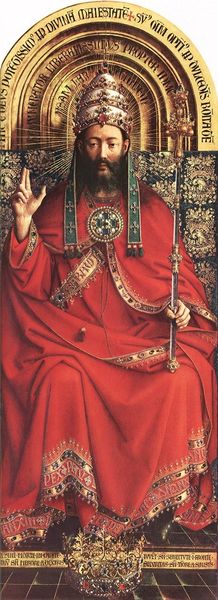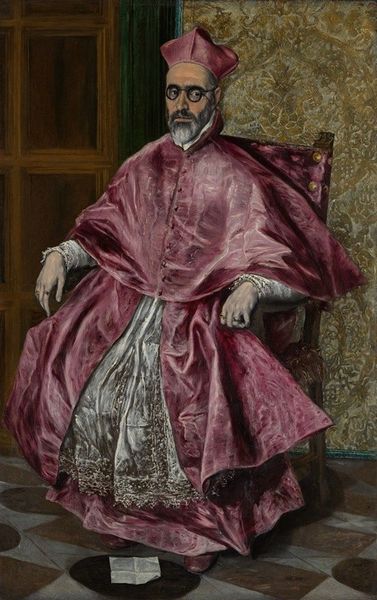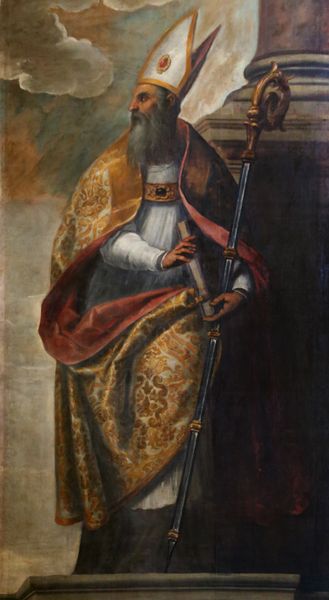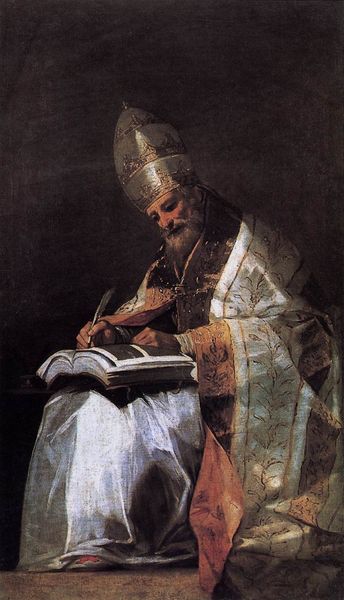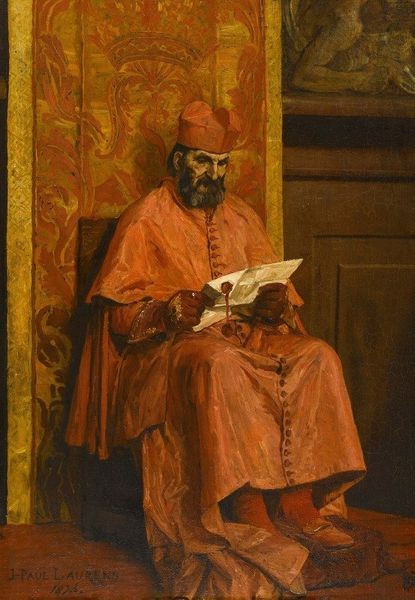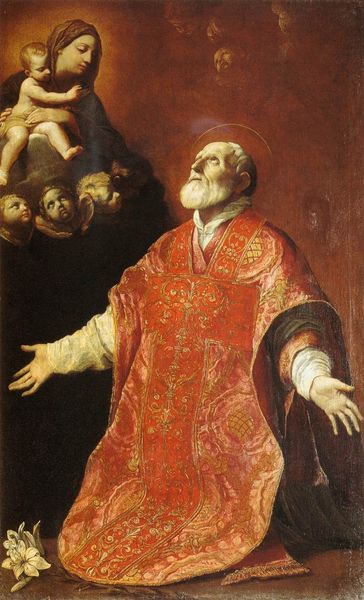
oil-paint
#
portrait
#
baroque
#
oil-paint
#
oil painting
#
history-painting
#
portrait art
Copyright: Public domain
Editor: So, here we have Peter Paul Rubens’ "Saint Ignatius of Loyola," an oil painting showcasing a standing saint. I'm really drawn to the intensity of the red in his robes. It contrasts sharply with the muted background and the white of his undergarments. How do you interpret the artist's choices in color and composition in conveying the figure’s character and story? Curator: Observe the interplay between the vermillion chasuble and the ecru accents—its structure alludes to hierarchy. The light emanates from an unseen source, illuminating Saint Ignatius’ face and lifting him, visually, from the darker, ambiguous space around him. Notice how his gaze rises, yet the corporeal is present, due to the heft of his garments and book he’s holding. Can you suggest why Rubens may have included the book as an element? Editor: Possibly to ground him – to give him intellectual heft as well as spiritual, considering it looks as if he’s staring up toward divine light? Does the direction of his gaze correlate with semiotic elements that underpin formal baroque portraiture? Curator: Precisely. Rubens directs the eye upward along a carefully constructed axis—from the book in his left hand, past the cascading folds of fabric and eventually terminating at the Saint’s upward tilted head. It represents visual drama integral to its underlying aesthetic: the tension between Earth and heaven. This is further intensified through light as well as impasto application in areas around Saint Ignatius of Loyola. Editor: This perspective makes me rethink how all of those components blend to communicate baroque themes beyond the image. Thank you for explaining all of this. Curator: You’re most welcome.
Comments
No comments
Be the first to comment and join the conversation on the ultimate creative platform.
